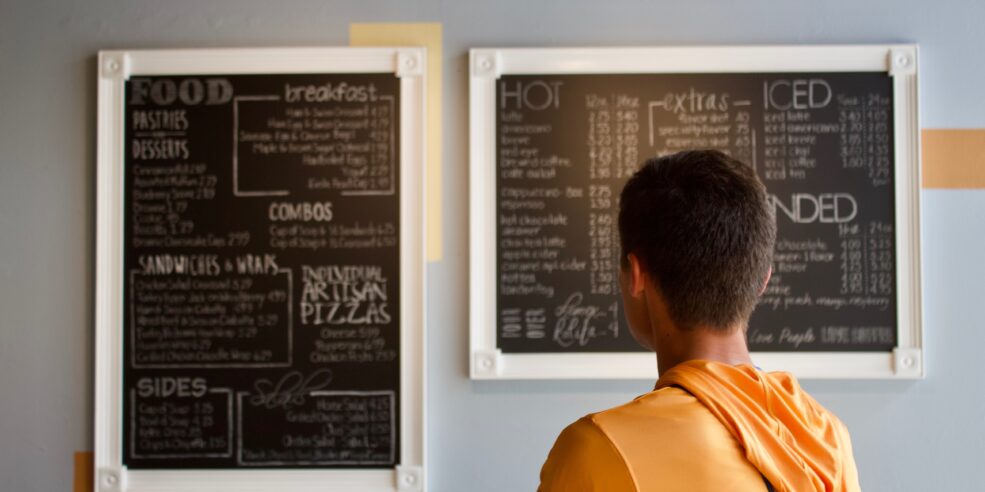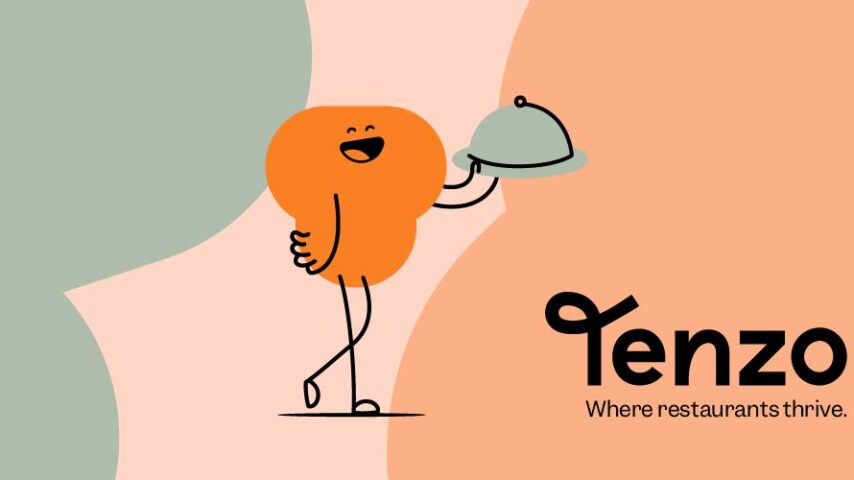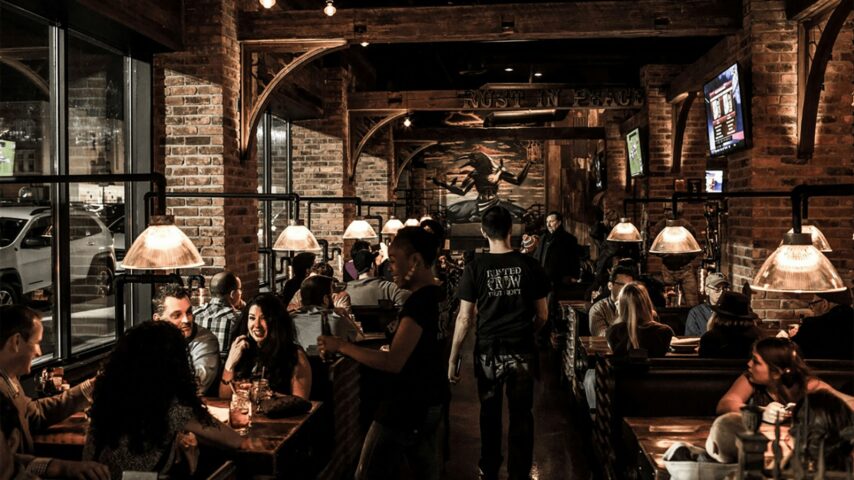In this article
Figuring out how to price your restaurant’s menu may seem simple at first, but when you factor in spiralling costs, inflation and consumer outlook, pricing strategy becomes a real challenge.
Tenzo recently produced a report looking at how much prices have risen in the last twelve months, and while the overall price increases averaged out at 9.23%, every business has approached their strategy differently.
In a recent webinar, Maddie Pellico, Customer Success Lead at Tenzo, pointed out that ‘instead of raising the whole menu by 10%, Tenzo customers are really focusing on different aspects of that menu, like looking at wet vs dry. We work with a brewery that’s kept their food all at the same cost but has raised their beer prices by about 10%. And we’re seeing the opposite in some other businesses.’
So what are the elements you need to consider when reviewing your pricing strategy?
Menu costing
The first port of call is figuring out exactly how much it costs to produce each menu item. To measure the cost of goods for every menu item in your restaurant, you need to start by calculating the cost of the ingredients used in the dish. This can be done by keeping track of the quantity and price of each ingredient used in a recipe in your inventory management platform.
If you don’t have a platform to automate this, you’ll need to work out the cost of each amount of ingredient that goes into the dish. Eg if a portion of chips requires 200g of potatoes and you buy potatoes at £1 per kilo, then the cost of potatoes for that dish is 20p.
Ideally, your cost of goods should be around 30% to 35% of your revenue although this does depend on the type of restaurant. QSRs will have a lower cost of goods than Fine Dining establishments due to the quality and variety of ingredients needed.
Once you understand exactly how much each item costs to make, you can start looking at pricing strategies to implement.

Understanding Pricing Strategies in Restaurants
Pricing strategy is the method used by restaurants to determine the prices of their menu items. It plays a crucial role in the overall performance of a restaurant, as it directly affects revenue and profitability. By setting the right prices, restaurants can attract customers, cover costs, and generate profits.
There are several potential pricing strategies out there, including:
- Cost-plus
- Triple pricing
- Dynamic pricing
- Promotion-based
Cost-Plus Pricing Strategy
Cost-plus pricing is a straightforward strategy that involves taking your cost of goods, adding your overheads and then adding the appropriate margin for profit.
Overheads would include any other costs incurred while making a dish including fixed costs like rent and electricity as well as other variable costs like labour. The simplest way to calculate your overheads per dish is to take a week’s worth of costs and divide them by the number of dishes you served in that week.
Unfortunately, this does mean that you’re averaging out your variable costs and if this was a week with a lower labour spend then you might underestimate costs. The best way to avoid this is to use a Restaurant PerformanceOps platform to keep track of variable costs like labour so you always know where you stand.
Once you have calculated the cost of making a dish, the advantage of a cost-plus strategy is that it’s simple and you are in complete control of your margins.
The problem is that it doesn’t take any external factors into account. Competition, economic environment and popularity all affect how much customers are willing to pay for items so having a set margin on every dish can be burdensome.
Triple Pricing strategy
Another effective strategy is triple pricing. This involves offering three different price points for customers to choose from. It is also often called the ‘good, better, best’ strategy.
The idea is to have a premium item – ‘best’ – which provides the highest margin, while also having a ‘better’ and ‘good’ option that have slightly lower margins.
A common example is ice cream: one scoop costs £4, two scoops £5, and three scoops £6.
Psychologically, three scoops seem like the best deal because it’s only £2 more expensive than one scoop, but there are also options for more price-sensitive customers.
This strategy can work well for QSRs or Casual Dining businesses that naturally have tiers on their menu (usually sizes or combo options) but is not ideal for fine dining establishments.
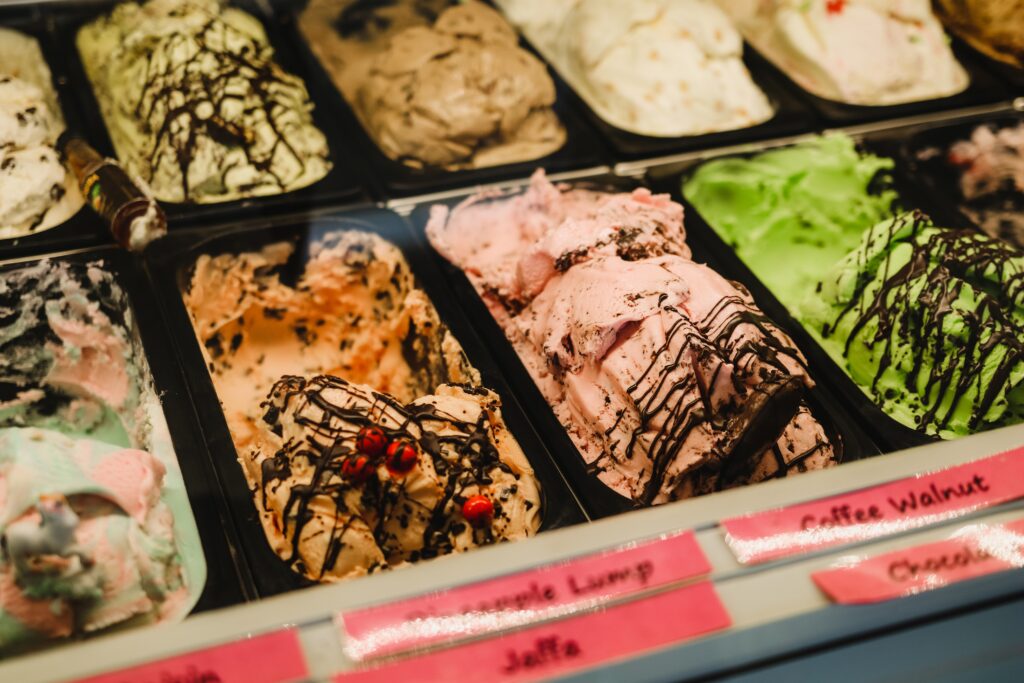
Dynamic Pricing Strategy
Dynamic pricing is a hot topic in the industry right now. It’s a strategy that allows restaurants to adjust their prices in real time based on various factors such as demand, time of day, and even weather conditions.
One of the main benefits of dynamic pricing for restaurants is the ability to optimise revenue on a daily basis. By adjusting prices based on demand, restaurants can charge higher prices during peak times when there is high demand, and lower prices during off-peak times to attract more customers.
To successfully implement dynamic pricing, you need to have a real-time view of your sales data as well as accurate forecasts to make pricing decisions – both of which Tenzo can help with.
However, do consider that it can also leave a bad taste in customers’ mouths if they feel they are being overcharged for items they’re used to getting at a lower price point. Just think about how you feel when there’s a significant surge price for an Uber – it’s not always pleasant and can lead to customers finding alternatives that they deem better value.
A great example of dynamic pricing though is Wall Street Wednesdays at The 411 in London: drinks go up and down in price depending on demand – just like the stock market. It’s a fun concept that brings the customer into the action by being totally transparent.
Promotion-based Pricing Strategy
Promotion-based pricing is an approach that involves offering discounts, deals, or promotions to attract customers and increase sales, often used to drive customer traffic during slow periods or to generate buzz around a new menu item.
This type of pricing also allows restaurants to differentiate themselves from competitors and create a sense of urgency among customers. By offering exclusive promotions or discounts, restaurants can make customers feel like they are getting a special deal that they can’t find elsewhere.
This is a common strategy in the QSR game – the hype around celebrity favourite meals at McDonald’s, or the queues for vegan nuggets at KFC prove how successful they can be – but it’s important to factor the promotion into your overall margins by considering how many of your usual guests will opt for a promotion over a full-price item and whether the increase in traffic thanks to the promotion will cover these losses.
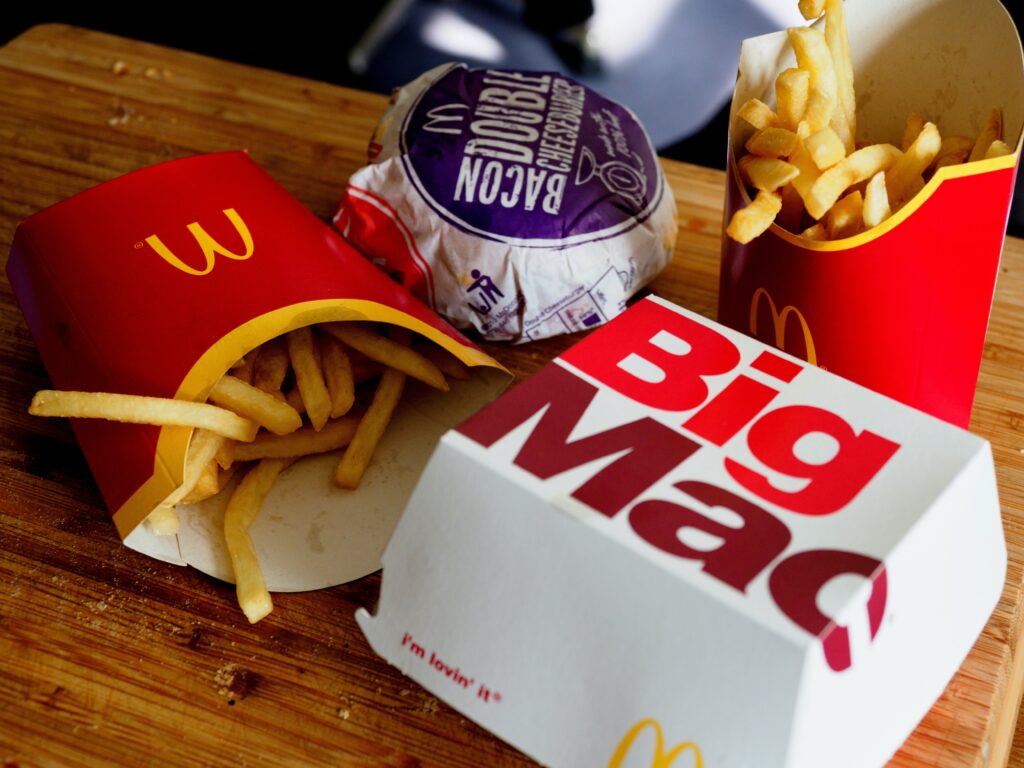
When and how to evaluate Pricing Strategies
Unfortunately, the work doesn’t end once you’ve decided on your strategy. Regularly evaluating prices is essential for restaurants to help control rising costs. Prices should be reviewed quarterly as well as when any significant cost increases occur.
According to Sam Benson, Enterprise Implementation Consultant at Tenzo, ‘I’d say prices should be reviewed as a quarterly exercise, but that being said, if there are significant changes in costs, prices need to be considered. For example, if the cost of steak goes up by 20% then it’s time to re-engineer the menu item or increase the price. Another out-of-cycle but relevant time is when the Government Budgets are announced and changes are implemented eg. alcohol duty changes, or minimum wage increases.’
It’s important to analyse your menu as a whole to identify where margins can be increased. Using menu engineering tactics, market research and tracking competitors will all help find efficiencies.
Menu Engineering
Menu engineering is incredibly important when it comes to generating the best margins while still giving customers confidence that they’re getting value.
Use menu item engineering to soften price rises. Blend price increases across the menu to ensure the real price rises actually flow through to your bottom line rather than raising prices on low-volume dishes or causing customers to trade down to cheaper items with a lower margin.
Consider the menu engineering matrix when you do this, evaluating your stars, plow horses, dogs and puzzles to establish where price changes will make the most impact.
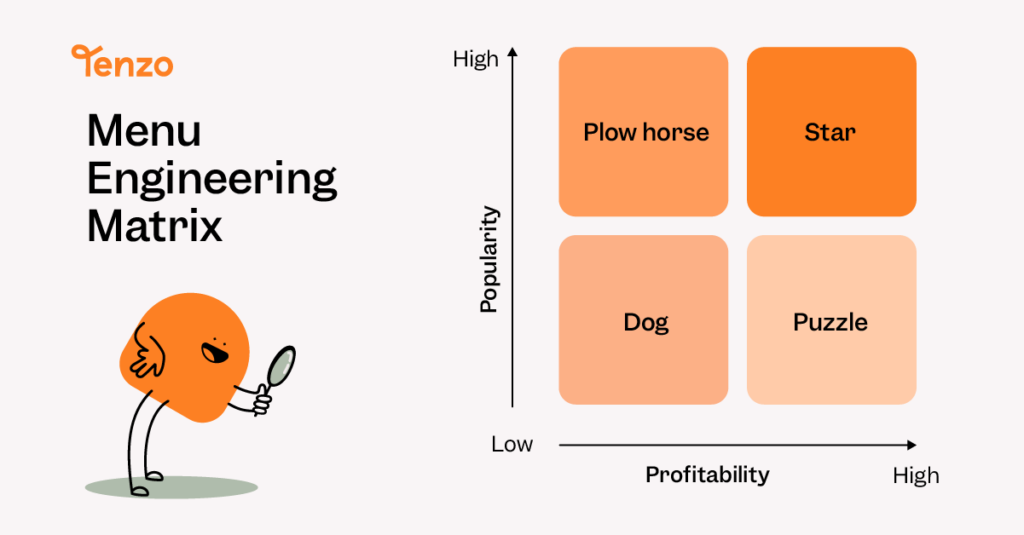
Every business is unique, so the areas that will drive margins will differ. We’ve seen some businesses choose to increase the price of their alcoholic drinks as these drive the most revenue, but keep food prices stable. For more food-led businesses, some have increased the price of mains but kept add-on price changes to a minimum, whereas others have taken the opposite approach and only increased prices of sides, appetisers and desserts.
What this shows is that it’s important to dive into your own data to understand where price increases will be tolerated and flow through to your bottom line and where they will potentially put off customers.
Market Research
To understand where your customer sentiment stands, consider conducting market research to identify customer preferences and their willingness to pay.
For example, Tenzo research has revealed that despite the cost of living crisis in the UK, customers have been willing to engage with increased prices. We’ve seen the number of transactions remain constant year-over-year despite a nearly 10% increase in prices.
Industry reports like these will help you understand the general sentiment across the industry, but getting insights on your own customers is most valuable. Consider implementing surveys on your contactless payment or customer experience platforms or tracking mentions on social media to understand your own customers’ feelings toward the value you provide.
This type of market research helps you understand your target market’s willingness to pay by gathering information about their spending habits and price sensitivity. This allows you to set a price that is both competitive and profitable, ensuring that you are not underpricing or overpricing your offering.
Tracking Competitor Pricing
Tracking competitor pricing is key. It allows you to stay competitive and ensure that your prices are in line with what other restaurants in your category are offering. Thankfully, now that all menus are typically available online, you save yourself from making regular rounds of all your competitors like Tenzo co-founder Christian Mouysset did back when he was running Hummus Bros.
‘We always needed to be aware of what our competitors were charging. Being a go-to for lunch, we knew what the other options were charging, whether that was a sandwich from Pret or a salad from Tossed, so that we could be in line with the market, but we also knew our own value and placed a premium on that.’
Tracking competitor pricing helps you identify trends and patterns in the market. Eg if chips are increasing across all your competitors it might be worth considering raising your own prices, although having the lowest-priced chips could also be a competitive advantage for your business if your margins can handle it. This type of differentiation can help you stand out in a crowded market and attract new customers who are looking for better value.
Conclusion
In conclusion, having an effective pricing strategy and reviewing it on a regular basis is crucial for restaurant operators. It allows you to maximise profits, attract customers, and stay competitive in a market faced with rising inflation and constantly increasing costs.
By understanding different pricing strategies and identifying opportunities for price increases, restaurant owners can make informed decisions that benefit their business.
If you’re looking for a tool to help find inefficiencies and optimise the performance of your restaurant business, Tenzo can help. From labour productivity to menu item profitability, we can reveal the areas of your business that need improvement as well as where you’re thriving. Get in touch today to find out more.
